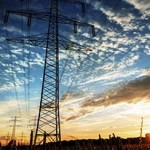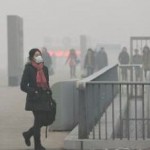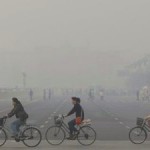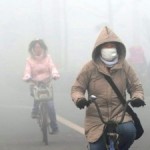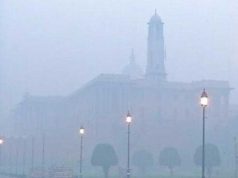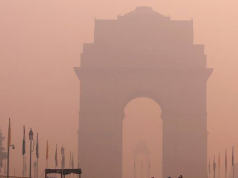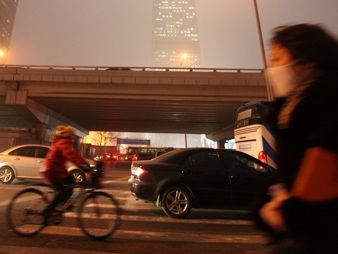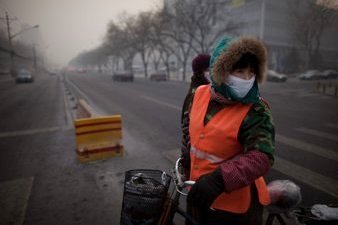 Beijing – Coal burning is the biggest contributor of air pollution in Beijing and surrounding area, according to a University of Leeds study sponsored by Greenpeace East Asia. Previous studies have linked outdoor air pollution to premature deaths and child asthma in the industry-intensive region which arguably has the worst air quality in China.
Beijing – Coal burning is the biggest contributor of air pollution in Beijing and surrounding area, according to a University of Leeds study sponsored by Greenpeace East Asia. Previous studies have linked outdoor air pollution to premature deaths and child asthma in the industry-intensive region which arguably has the worst air quality in China.
Led by Dr. Guan Dabo of School of Earth and Environment, the University of Leeds, the study traces PM2.5 (fine particles with a diameter under 2.5µm) in the Beijing-Tianjin-Hebei region to a complex mixture of primary and secondary sources, while establishing coal combustion as the biggest origin of pollutants.
“To tackle such a big problem, you must get to the bottom of it first. One important finding of this study is the actual amount of PM2.5 released into the air – in 2010 alone, it was more than ten million tons. We also confirmed that actually the majority of air pollution happens when certain gases are discharged into the air and turn into fine particles. And coal burning contributes most of these gases,” said Dr. Guan. By calculating various industries’ discharges, the study finds coal power generation, and steel and cement production to have the biggest responsibilities for regional air pollution.
PM2.5 can enter a person’s blood stream and contribute to respiratory and other diseases and greater cancer risks. The “2010 Global Burden of Disease Study” found that outdoor air pollution contributed to 1.2 million premature deaths in China in 2010 alone. Another study by Peking University found that more than 8,000 people died prematurely in four Chinese cities due to PM2.5 pollution.
China has vowed to improve air quality in densely populated areas including the Beijing-Tianjin-Hebei region, aiming to reduce the average annual PM2.5 level in the area by 25% by 2017. However, with this clean-up pace, the National Air Quality Standard Level of 35µg/m3 cannot be achieved until 2030.
“To us it is a simple matter of time. On one hand, we are glad to see that unprecedented measures have been announced, such as capping coal consumption in some of the worst polluted places. On the other, we know China simply cannot afford to allow air pollution to continue taking such a heavy toll. By all means, China should be racing against the clock to save lives, and it has to bring what it’s doing now to the next level,” said Huang Wei, Climate and Energy Campaigner, Greenpeace East Asia, referring to the Airborne Pollution Prevention and Control Action Plan issued by the State Council in September.
Based on individual analysis of air pollution sources of each province or municipality, the study presents tailored tool-kits for Beijing, Tianjin and Hebei to tackle the problem as fast as possible. The tool-kits share several priorities such as replacing coal with renewable energy and getting rid of energy-intensive and dirty industries. By taking these measures, the study predicts that the region will eliminate up to 80% of PM2.5 pollution and achieve national air quality standard in a decade, instead of 17~18 years.
“We are aware that Beijing and Zhang Jia Kou of Hebei are co-bidding for the 2022 Winter Olympics. It’s actually the perfect incentive for the region to use the coming decade as a window to upgrade its economy and clean up its air. We believe this can be achieved and once it is achieved, it will be a perfect win-win scenario for the regional economy and public health,” said Huang Wei.
Click here to read/download the Full Report – “Tracing Back the Smog: Source Analysis and Control Strategies for PM2.5 Pollution in Beijing-Tianjin-Hebei”.
Source: Greenpeace.

